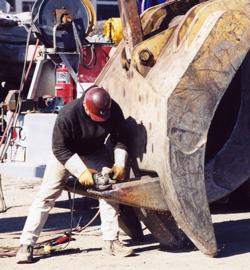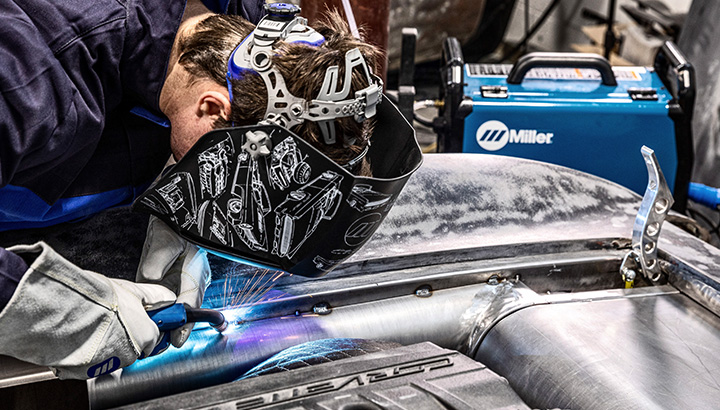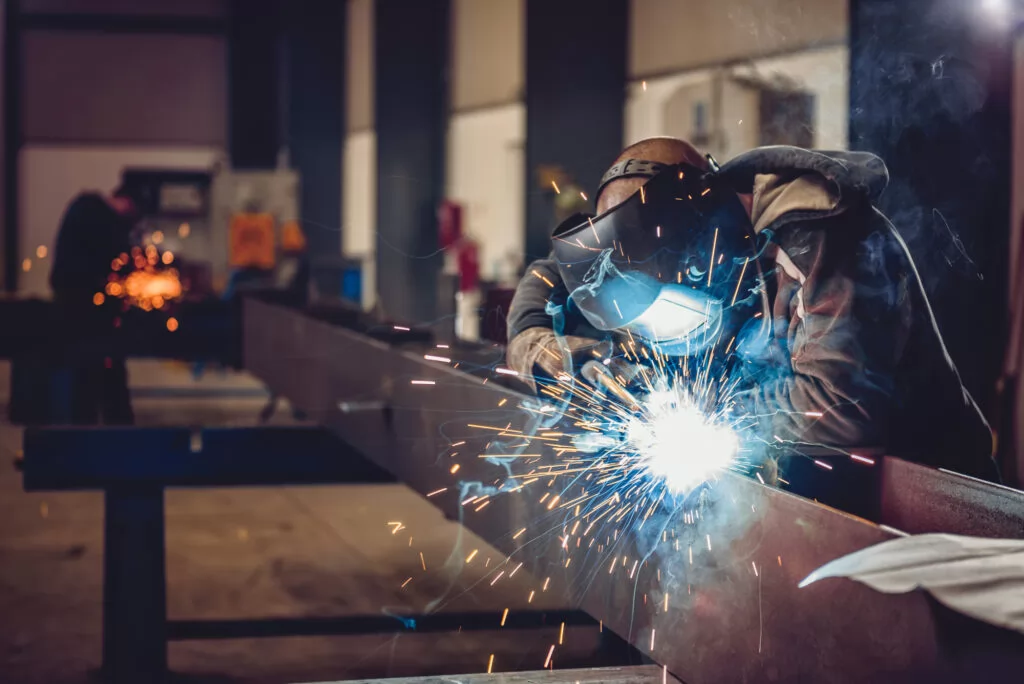Typical Welding Repair Issues and Just How to Address Them Properly
Welding repair work commonly run into an array of problems that can jeopardize the integrity of the end product. Usual problems consist of poor infiltration, porosity, and misalignment, among others. Each flaw provides distinct challenges that call for certain methods for resolution. Understanding these problems is necessary for welders aiming to enhance their abilities and results. This discussion will discover these usual welding repair work concerns and efficient approaches to address them.
Poor Penetration
Insufficient penetration happens when the weld steel fails to fully fuse with the base material, leading to weak joints and potential architectural failings. This issue typically comes from inadequate warm input, wrong electrode angle, or improper welding speed. Welders may run into poor penetration because of a miscalculation of the required parameters for a particular material density or kind. In addition, contamination on the base product's surface can prevent efficient bonding, aggravating the problem. To address poor penetration, welders should guarantee appropriate settings on their equipment and preserve a clean work surface area. Routine evaluation of welds is recommended to recognize any type of shortages early, permitting timely adjustments and the prevention of endangered structural stability in welded settings up.
Porosity
Porosity is a common defect in welded joints that manifests as small gas bubbles caught within the weld steel. This issue can jeopardize the stability of the weld, leading to reduced stamina and prospective failing under stress. Belgrade. Porosity normally occurs from contamination, moisture, or inappropriate welding strategies, which enable gases to leave into the liquified weld swimming pool. To deal with porosity, welders need to ensure proper surface prep work, maintain a tidy working atmosphere, and use appropriate welding parameters. In addition, choosing the appropriate filler material and shielding gas can minimize gas entrapment. Routine examination and testing of welds can assist determine porosity early, ensuring timely corrective actions are taken, thereby protecting the quality and integrity of the bonded framework
Misalignment
Misalignment in welding can arise from different elements, including inappropriate configuration and thermal development. Comprehending the origin triggers is important for effective resolution. Numerous adjustment techniques are readily available to realign components and ensure structural integrity.
Root causes of Imbalance
Welding imbalance commonly stems from a range of underlying concerns that can endanger structural integrity. One key cause is improper fit-up of elements before welding, which can cause voids and uneven surface areas. Variations in thermal growth during the welding procedure can additionally lead to distortion, especially if the products being signed up with have different coefficients of expansion. In addition, insufficient fixturing and clamping may fall short to hold elements securely in position, bring about motion throughout welding. Badly kept devices, including welding machines and tools, might introduce inconsistencies in the weld grain, additional adding to imbalance. Operator error, stemming from not enough training or experience, can additionally play a considerable duty in creating misaligned welds.

Adjustment Methods Offered
Dealing with imbalance properly calls for a mix of rehabilitative strategies tailored to the particular issues handy. One typical approach is the usage of components or jigs to hold components in the right placement throughout welding, ensuring regular alignment. Furthermore, preheating the products can help reduce distortion and enhance fit-up. For substantial imbalance, mechanical realignment methods, such as making use of hydraulic jacks or clamps, can be employed to correct the setting prior to welding. Post-weld heat treatment may also be needed to ease tensions brought on by misalignment. Mindful inspection and adjustment during the configuration phase can stop misalignment issues from becoming significant problems, advertising a smoother welding process and enhancing general structural integrity.
Distortion
Distortion is a typical difficulty in welding that can arise from numerous factors, including unequal cooling and heating. Understanding the sources of distortion is vital for implementing efficient prevention techniques. Resolving this concern not only enhances structural honesty yet also enhances the general high quality of the weld.
Causes of Distortion
When subjected to the intense warmth of welding, materials frequently undertake adjustments that can cause distortion. This phenomenon primarily arises from thermal growth and tightening throughout the welding process. As the weld area heats up, the material broadens; upon air conditioning, it contracts, which can create inner anxieties. On top of that, unequal home heating throughout a workpiece can worsen these stresses, causing warping or flexing. The type of product additionally plays a considerable duty; metals with differing thermal conductivity and coefficients of expansion might react differently, resulting in unforeseeable distortions. In addition, inadequate joint design and inadequate fixturing can add to imbalance throughout welding, enhancing the probability of distortion. Recognizing these reasons is vital for effective welding repair work and avoidance approaches.
Avoidance Techniques
Effective avoidance methods for distortion throughout welding concentrate on managing heat input and making sure proper joint layout. Preserving a consistent heat input assists to decrease thermal development and tightening, which can bring about distortion. Making use of methods such as pre-heating the work surface can additionally decrease the temperature level slope, promoting consistent home heating. Additionally, choosing suitable joint designs, such as T-joints or lap joints, can enhance security and reduce stress and anxiety concentrations. Executing appropriate fixturing to secure the work surfaces in position further aids in keeping placement throughout the welding process. Lastly, staggered welding series can disperse warmth extra uniformly, avoiding local distortion. By using these methods, welders can considerably lower the probability of distortion and enhance the general quality of their welds.
Breaking
Splitting is a typical problem run into in welding repairs, usually resulting from numerous variables such as inappropriate air conditioning rates, product selection, or inadequate joint preparation. The incident of cracks can significantly compromise the integrity of the weld, resulting in possible failings throughout operation. To address this issue, welders need to first assess the source, making sure that products are compatible and suitably selected for the specific application. Furthermore, controlling the air conditioning price throughout the welding process is important; rapid cooling can cause stress and lead to cracking. Appropriate joint design and preparation also contribute to reducing the risk. Implementing these techniques can boost weld top quality and sturdiness, ultimately decreasing the chance of breaking in completed weldments.

Incomplete Blend
A significant issue in welding fixings is insufficient combination, which happens when the weld metal does not appropriately bond with the base product sip welders or previous weld passes - Belgrade Welding. This defect can result in weak points in the joint, possibly endangering the honesty of the welded framework. Aspects adding to insufficient combination include inadequate warm input, improper welding technique, and contamination of the surface areas being signed up with. To address this problem successfully, welders need to assure correct pre-weld cleaning and surface prep work, along with readjust their welding specifications to attain appropriate penetration and combination. Regular inspection throughout the welding process can additionally aid identify incomplete blend early, enabling timely rehabilitative steps to enhance the total quality of the weld
Overheating
While welding repair services can boost structural integrity, overheating provides a significant difficulty that can bring about material deterioration. Extreme warm throughout welding can change the mechanical residential properties of metals, causing decreased strength, boosted brittleness, and bending. This phenomenon is specifically important in high-stress applications where structural integrity is critical. Recognizing getting too hot can involve aesthetic examinations for staining or distortion, as well as checking temperature throughout the welding process. To minimize the threats related to overheating, welders must employ appropriate strategies, such as regulating warmth input, adjusting travel speed, and utilizing suitable filler materials. Furthermore, implementing pre- and post-weld warmth treatments can assist bring back material residential or commercial properties and improve the total top quality of the fixing, making certain long-lasting efficiency and safety.
Regularly Asked Questions
What Are the Typical Signs of a Welding Defect?

Just How Can I Check My Welds for High quality?
To examine welds for high quality, one can utilize aesthetic assessments, ultrasonic screening, and radiographic techniques. Each technique ensures structural honesty, determines defects, and confirms adherence to specified standards, ultimately boosting the integrity of the welded joints.
What Safety Safety Measures Should I Take While Welding?
When welding, one ought to prioritize safety by putting on proper individual protective devices, guaranteeing appropriate air flow, protecting flammable materials away, maintaining a clean office, and being mindful of environments to stop injuries and accidents.
Can I Fix a Weld Without Remodeling the Entire Joint?
Repairing a weld without renovating the entire joint is feasible, depending on the damage (Montana Mobile Welding and Repair Fabrication). Strategies such as grinding, including filler product, or utilizing a welding procedure can effectively deal with particular problems while maintaining the surrounding framework
What Devices Are Crucial for Efficient Welding Services?
Essential tools for reliable welding repair services consist of a welding device, cable brush, grinder, protective gear, clamps, and filler products. Each device plays a vital role in ensuring high quality and safety during the repair procedure. Porosity typically emerges from contamination, wetness, or improper welding methods, which permit gases to escape right into the molten weld pool. Inadequately conserved equipment, including read the article welding machines and devices, may present disparities in the weld bead, further adding to imbalance. When subjected to the extreme warmth of welding, materials usually go through adjustments that can lead to distortion. Breaking is an usual issue experienced in welding repair services, typically resulting from numerous variables such as improper cooling check this site out rates, material option, or poor joint prep work. A substantial concern in welding repair work is insufficient fusion, which happens when the weld metal does not properly bond with the base product or previous weld passes.